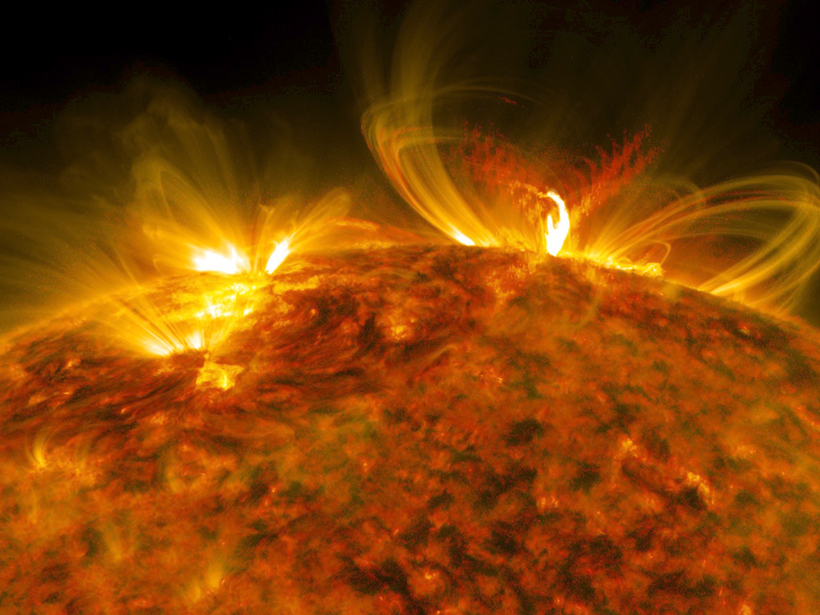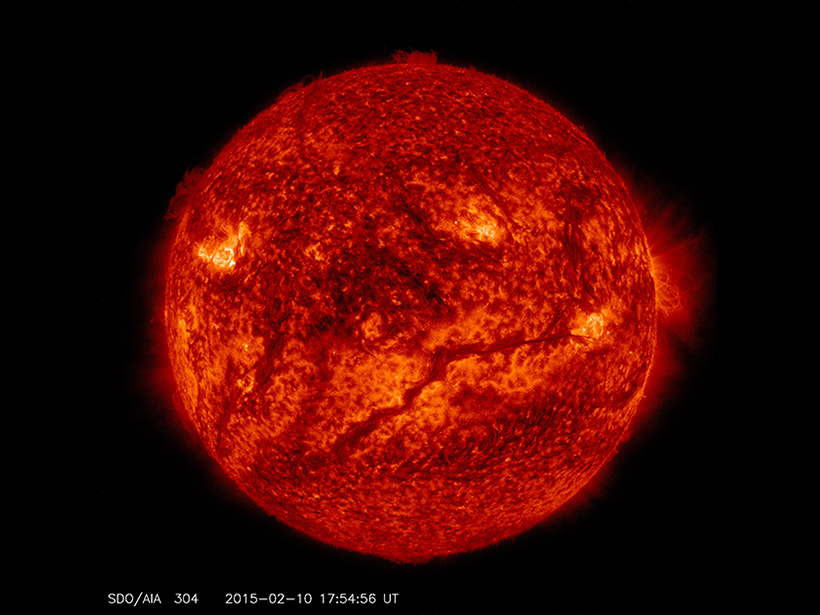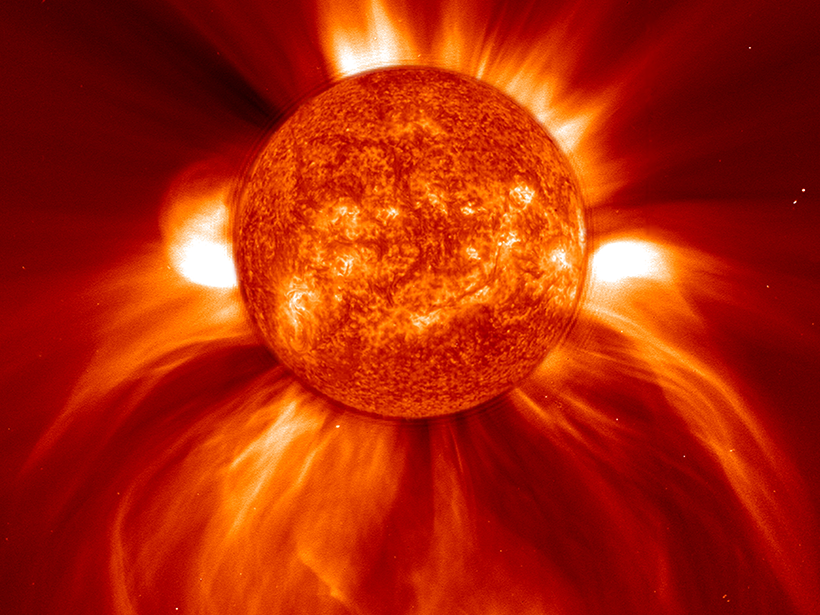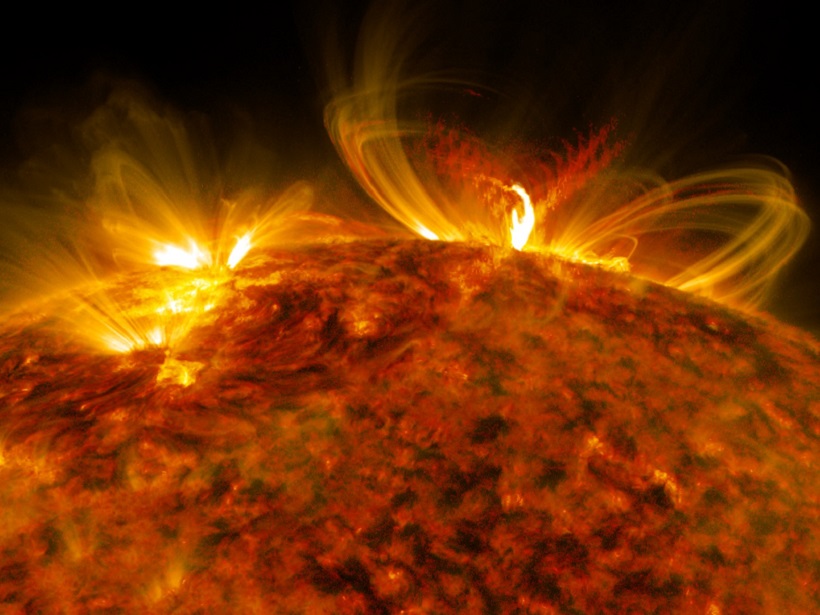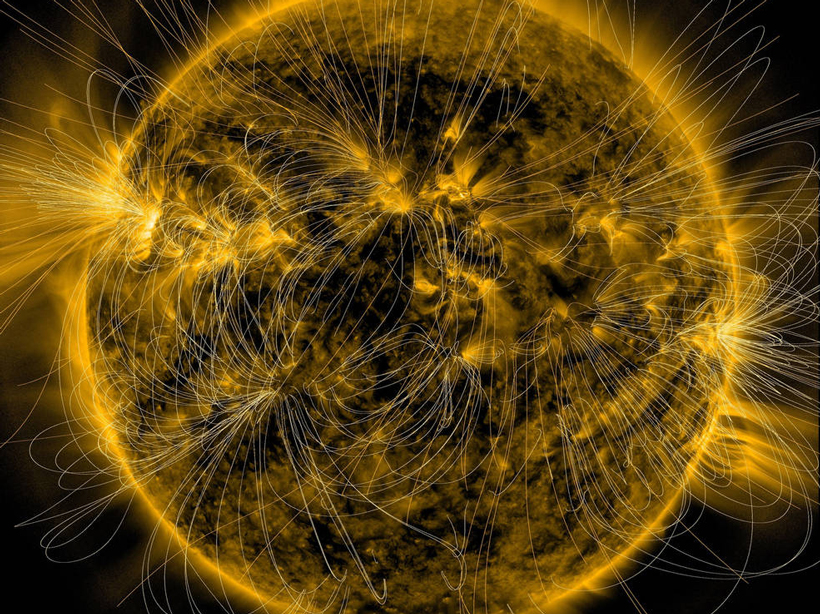Measurements by a Mars-orbiting spacecraft indicated heating and chemistry changes in the planet’s atmosphere following an extreme solar eruption last year.
the Sun
Preserving a 45-Year Record of Sunspots
Maps reveal how the Sun’s magnetic field evolves through solar cycles.
A Better Way to Predict Space Storms
A new model of solar winds could reduce false alarms.
A Survey of Solar Radio Burst Statistics
National solar radio archive records have substantial missing data potentially affecting the ability to benchmark extreme solar events.
A Wake-up Call from the Sun
A sudden burst of activity from the Sun in early September 2017 caused a wide range of space weather effects at Earth.
Solar Probe Will Approach Sun Closer Than Any Prior Spacecraft
Technological improvements, including an advanced thermal protection system and innovative solar arrays, have helped to get this mission off the drawing board.
Eclipse’s Last Major Stop Is Rich in Science and Amazement
Eclipse celebrations and scientific preparations abound in the final large U.S. population center to see Monday’s total eclipse.
Integrating Research of the Sun-Earth System
International Symposium on Recent Observations and Simulations of the Sun-Earth System III; 11–16 September 2016, Varna, Bulgaria
For Magnetic Reconnection Energy, O—not X—Might Mark the Spot
A new analysis of satellite data could upend conventional wisdom about how solar storms produce their dangerous radiation—not from X-shaped mergers of magnetic field lines but from swirling vortices.
Explaining Unexpected Twists in the Sun's Magnetic Field
New research shows how the Sun's magnetic field can shift when it approaches Earth, which can throw off space weather forecasts.

